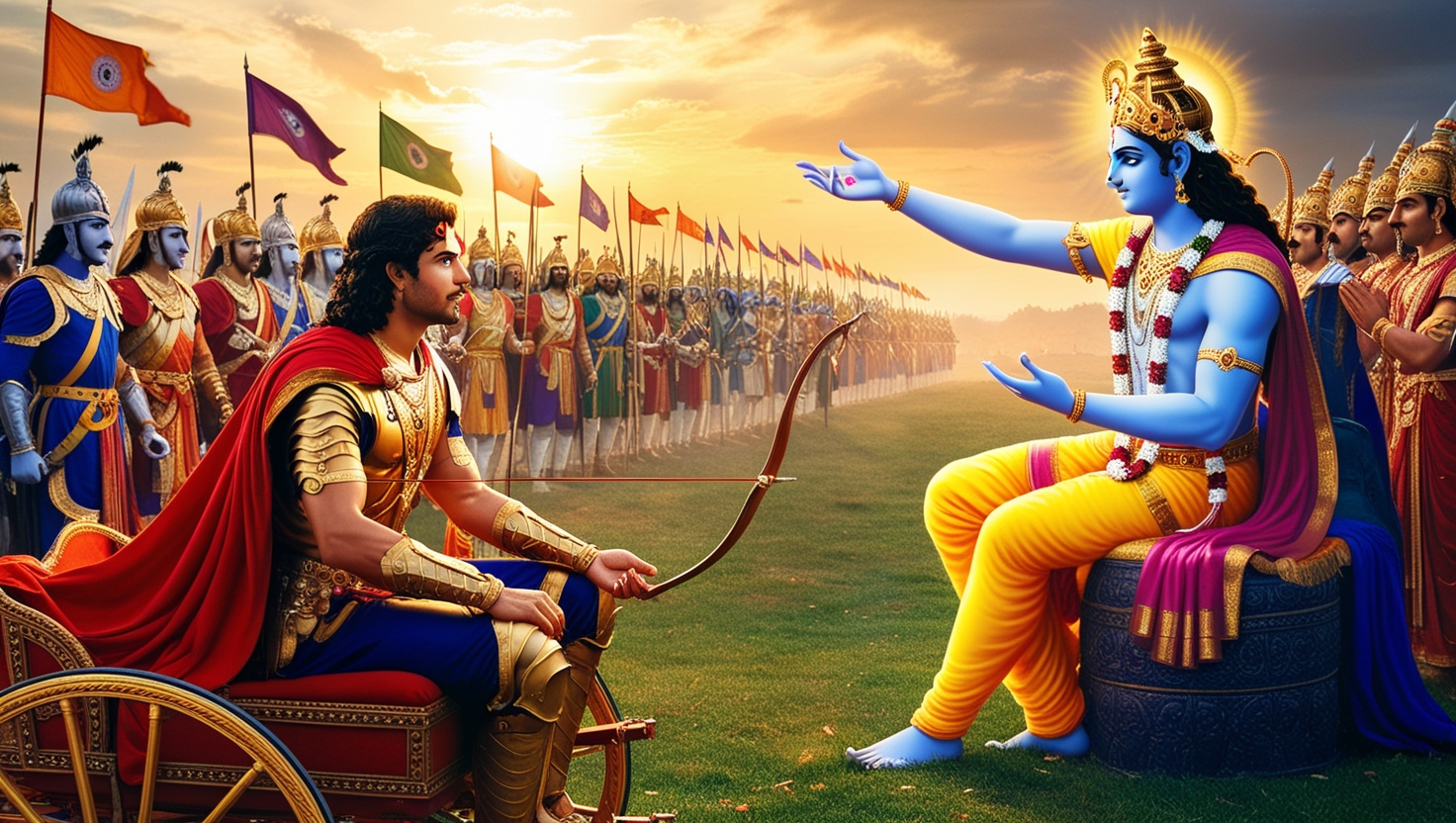
What is the Bhagavad Gita? An Overview of the Sacred Text
The *Bhagavad Gita*, often referred to as the “Gita,” is one of the most revered and influential spiritual texts in Hindu philosophy. It forms part of the Indian epic *Mahabharata*, specifically in the *Bhishma Parva* (Book of Bhishma), and is a dialogue between the prince Arjuna and the god Krishna, who serves as his charioteer. This profound scripture contains essential teachings on life, duty, righteousness, and spirituality, offering timeless wisdom relevant across cultures and ages.
Historical and Cultural Context – Bhagavad Gita
The *Bhagavad Gita* was likely composed between the 5th and 2nd centuries BCE, during a time of great social and political change in ancient India. It appears in the context of the great war of *Kurukshetra*, where two groups of cousins, the Pandavas and the Kauravas, are about to engage in battle. Arjuna, the warrior prince of the Pandavas, is paralyzed by doubt and moral conflict at the thought of fighting against his own relatives, teachers, and friends. This inner turmoil serves as the catalyst for Krishna’s teachings.
The Central Theme: Dharma and Duty
The central theme of the *Bhagavad Gita* revolves around the concept of *Dharma*, or duty. Arjuna’s hesitation reflects a common human dilemma—how to fulfill one’s obligations in life when faced with difficult choices. Krishna, embodying divine wisdom, encourages Arjuna to rise above his attachments and fears. He teaches that one must perform their duties selflessly, without attachment to the outcomes. This philosophy of selfless action, known as *Karma Yoga*, is a key aspect of the Gita’s teachings.
The Paths to Liberation as per Bhagavad Gita
The *Bhagavad Gita* outlines several paths to spiritual liberation, known as *moksha*, emphasizing that different individuals can take different approaches depending on their temperament and life circumstances. The three primary paths are:
1. Karma Yoga (The Path of Selfless Action): Krishna emphasizes that action is inevitable in life, but one must act without attachment to the results. Performing one’s duties with a sense of surrender to the divine will leads to liberation.
2. Bhakti Yoga (The Path of Devotion): This is the path of surrender and devotion to a personal god. Krishna advises Arjuna to devote himself to the divine in love and trust, stating that pure devotion can lead one to liberation.
3. Jnana Yoga (The Path of Knowledge): This path involves gaining knowledge of the true nature of reality and the self. It is the realization that the soul (*atman*) is eternal and beyond the physical body. Through understanding and inner reflection, one can overcome ignorance and attain liberation.
The Concept of the Self
One of the most profound teachings of the *Bhagavad Gita* is its insight into the nature of the self. Krishna explains that the body is temporary, but the soul (*atman*) is eternal, unchanging, and indestructible. This knowledge helps Arjuna realize that the death of the physical body does not mean the end of existence. The soul transcends life and death, and understanding this is key to overcoming the fear of mortality and attachment.
Relevance in Modern Times
Though composed thousands of years ago, the *Bhagavad Gita* continues to inspire millions around the world. Its teachings are not confined to any specific religion or culture but speak to universal human concerns—how to live a meaningful life, how to face challenges, and how to reconcile spiritual beliefs with worldly duties. Its message of acting without attachment, finding purpose through service, and the importance of inner wisdom is timeless.
Conclusion
The *Bhagavad Gita* is much more than just a religious scripture—it is a profound guide to life. Its teachings touch upon the most essential questions of human existence: What is the purpose of life? How should one act? How does one deal with suffering and loss? With its timeless wisdom, the Gita continues to provide spiritual nourishment and practical guidance for people seeking meaning in a complex world.
Whether you approach it from a religious, philosophical, or ethical perspective, the *Bhagavad Gita* offers invaluable insights that can illuminate the path toward inner peace and self-realization.
Support us by purchasing from our Affiliate Links:

Trackbacks/Pingbacks